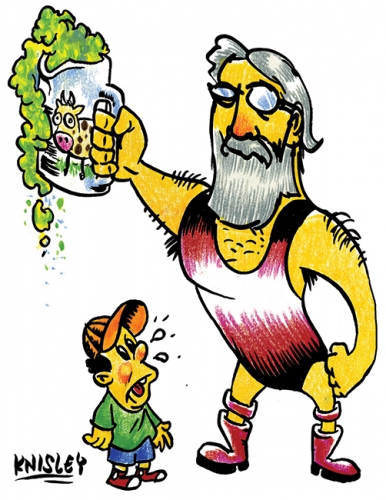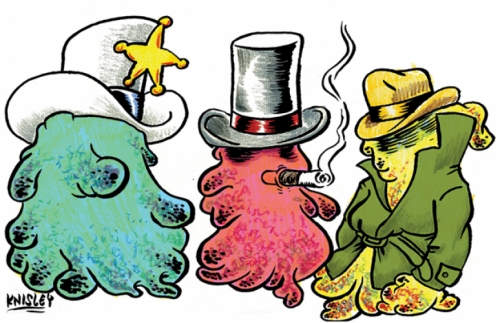Probiotics date back to the early 1900s, when Russian scientist Elie Metchnikoff observed that Bulgarian peasants lived unusually long lives. He thought it was because they ate milk fermented by lactic acid bacteria. Metchnikoff started eating fermented sour milk made with a bacterium he called Bulgarian Bacillus, and reported that his health improved. His friends began eating it. Doctors in Paris, where Metchnikoff worked at the Pasteur Institute, began telling patients about it. After his death, Metchnikoff’s bacterium was renamed Lactobacillus delbrueckii subsp. bulgaricus, which is one of the bacteria in some yogurts.
In 1920 scientists found that L. d. bulgaricus could not live in the human intestines; they doubted it had any benefit. The fermented milk fad faded in Paris, but research was just getting underway in the United States. In 1935 U.S. researchers surmised that L. acidophilus, a naturally occurring gut flora, would be more beneficial than L. d. bulgaricus. Clinical trials concluded that L. acidophilus helped relieve constipation. In 1989 probiotics were defined as live microbial feed supplements that beneficially affect the host animal by improving its intestinal microbial balance. Since then companies have cultured various bacterial strains and sold them as digestive aids.
“But not all probiotics are equal,” Sartor says. Many of the probiotic products you can buy in stores have not been tested. Tamar Ringel-Kulka, a UNC maternal and child health researcher, studied literature about the health benefits of probiotics marketed for kids and found that very few products had been investigated for effectiveness. Through a series of clinical studies, she and gastroenterologist Yehuda Ringel, her husband, have been investigating the beneficial effects of probiotics in children and adults. They’re also trying to figure out how exactly these good bacteria work.
Ringel sees patients who have functional GI disorders for which there are no clear causes, such as inflammation or identified infections. Symptoms can include diarrhea, gas, bloating, nausea, constipation, and abdominal pain.
In one study, Ringel gave participants Lactobacillus acidophilus NCFM, a probiotic developed at NC State, and Bifidobacterium Lactis Bi-07. “The main effect was on bloating,” Ringel says. “It was significantly reduced in patients who received probiotics compared to those who received placebos.” The Mayo Clinic tested another blend of probiotics and also found that patients experienced significantly less bloating and gas. And, Ringel says, an RTP company got similar results after treating patients with an antibiotic that works only in the digestive tract.
Ringel and Ringel-Kulka are now studying the possible mechanisms by which probiotics relieve bloating. Previous animal studies revealed that L-NCFM can increase the activation of the colon’s opioid receptors. “It may work like morphine,” Ringel says. “If you activate the opioid receptors, you reduce sensation.” You reduce the feeling of bloating. Ringel and Ringel-Kulka are now investigating whether something similar happens in humans.
Meanwhile, molecular biologist Ian Carroll is using UNC’s Microbiome Core Facility to characterize bacteria taken from the people in Ringel and Ringel-Kulka’s studies. The goal, Ringel says, is to gain a better understanding of the intestinal microbiota, especially in patients with functional GI disorders. Maybe a different probiotic would help more patients or alleviate different symptoms. Maybe a specific bacterial concoction can help prevent digestive problems.
Ringel-Kulka, a pediatrician, is doing that kind of work with children. She gave healthy kids aged one to four a yogurt drink containing Streptococcus thermophilus, Lactobacillus bulgaricus, Bifidobacterium lactis (BB-12), and the prebiotic inulin for sixteen weeks. After collecting biweekly journals that the children’s parents completed, Ringel-Kulka found that kids who drank the concoction had fewer days of fever and significantly better quality of life, which in this context means that the kids felt better than usual and behaved better in day care than kids who were given a placebo.
“The changes we found aren’t the major kinds of changes you see in patients who are ill,” Ringel-Kulka says. “But that’s why it’s meaningful. The fact that you can improve health even further in healthy kids is pretty interesting.”
That’s especially true when you factor in that our symbiotic relationship with bacteria begins at birth.










